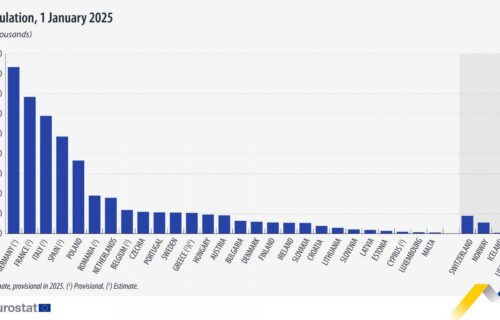The population of the European Union reached an estimated 450.4 million people on 1 January 2025, reflecting an increase of just over one million compared with the previous year, according to data released by Eurostat. This marks the fourth consecutive year of population growth following a decline in 2021 linked to the impact of the COVID-19 pandemic.
The recent increase is largely attributed to higher levels of migration in the post-pandemic period. Since 2012, natural population change in the EU has been negative each year, with more deaths than births, but this has been offset by positive net migration flows.
Over the longer term, the EU’s population has expanded significantly, rising from 354.5 million in 1960 to 450.4 million in 2025, an increase of nearly 96 million. However, growth has slowed in recent decades. Between 2005 and 2024, the EU population grew by an average of about 0.9 million people per year, compared with roughly three million per year during the 1960s.
As of the start of 2025, Germany remained the EU’s most populous member state, with 83.6 million residents, representing 19 percent of the total EU population. France and Italy followed with 15 percent and 13 percent shares, respectively. Together, these three countries accounted for nearly half of the EU’s population.
While the overall EU population grew, eight member states recorded population declines over the past year. Latvia experienced the steepest drop, with a crude rate of change of minus 9.9 per 1,000 people, followed by Hungary, Poland, and Estonia.
Among member states with growing populations, Malta reported the highest increase at 19.0 per 1,000 people, ahead of Ireland at 16.3 and Luxembourg at 14.7.
Source: eurostat
